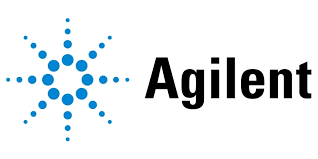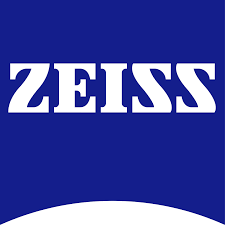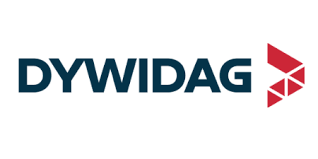Solar Tracker
Published Date: 02 June 2025 | Report Code: solar-tracker
Solar Tracker Market Size, Share, Industry Trends and Forecast to 2033
This comprehensive report presents an analysis of the Solar Tracker market covering the forecast period from 2024 to 2033. It delivers key insights into market trends, size, segmentation, technological innovations, and product performances across various regions. The report offers valuable data and forecasts to assist manufacturers, investors, and policy makers in making informed strategic decisions.
| Metric | Value |
|---|---|
| Study Period | 2024 - 2033 |
| 2024 Market Size | $8.50 Billion |
| CAGR (2024-2033) | 7.8% |
| 2033 Market Size | $17.06 Billion |
| Top Companies | SunPower Corporation, First Solar, Inc., Trina Solar |
| Last Modified Date | 02 June 2025 |
Solar Tracker (2024 - 2033)
Solar Tracker Market Overview
Customize Solar Tracker market research report
- ✔ Get in-depth analysis of Solar Tracker market size, growth, and forecasts.
- ✔ Understand Solar Tracker's regional dynamics and industry-specific trends.
- ✔ Identify potential applications, end-user demand, and growth segments in Solar Tracker
What is the Market Size & CAGR of Solar Tracker market in 2024?
Solar Tracker Industry Analysis
Solar Tracker Market Segmentation and Scope
Tell us your focus area and get a customized research report.
Solar Tracker Market Analysis Report by Region
Europe Solar Tracker:
Europe is at the forefront of adopting environmentally friendly technologies, as reflected in its Solar Tracker market growth from 2.71 in 2024 to 5.44 in 2033. Stringent carbon reduction targets and substantial R&D investments are driving innovation and ensuring steady market progression across the continent.Asia Pacific Solar Tracker:
In the Asia Pacific region, the Solar Tracker market is emerging at a rapid pace with growth supported by government initiatives, increasing infrastructure investments, and a strong drive for renewable energy adoption. Projections indicate a rise from a market size of 1.29 in 2024 to 2.58 in 2033, reflecting both technological innovation and enhanced consumer interest.North America Solar Tracker:
North America remains a key player, with its mature energy infrastructure and supportive regulatory frameworks. The region is expected to see significant market growth, expanding from 3.23 in 2024 to 6.49 in 2033. Advanced technological integration and heightened consumer awareness continue to bolster market demand.South America Solar Tracker:
South America is witnessing a gradual yet steady growth in the Solar Tracker market. Accelerated by rural electrification projects and evolving energy policies, the market is set to expand from 0.72 in 2024 to 1.45 in 2033. This region benefits from increasing investments in renewable energy, driving sustainable development and improved energy accessibility.Middle East & Africa Solar Tracker:
The Middle East and Africa, while currently the smallest market segment, show promising potential. With market figures projected to grow from 0.55 in 2024 to 1.11 in 2033, the region is poised to leverage abundant solar resources and increasing energy demands, paving the way for gradual market expansion.Tell us your focus area and get a customized research report.
Solar Tracker Market Analysis By Type
Global Solar Tracker Market, By Type Market Analysis (2024 - 2033)
The analysis by type focuses on Single-Axis Trackers and Dual-Axis Trackers. Single-Axis systems dominate with high efficiency and ease of installation, evidenced by consistent market size and share figures. Dual-Axis systems, though smaller, offer precise tracking and increased energy yield, forming a critical niche within the broader market.
Solar Tracker Market Analysis By Technology
Global Solar Tracker Market, By Technology Market Analysis (2024 - 2033)
Technological advancements have transformed Solar Tracker systems, with a clear shift towards smart and digital control mechanisms. The market is evolving with the integration of sensors, IoT connectivity, and automated adjustment features that enhance performance and reduce maintenance. This segment emphasizes innovation, efficiency, and data-driven optimization.
Solar Tracker Market Analysis By Installation
Global Solar Tracker Market, By Installation Type Market Analysis (2024 - 2033)
Installation analysis differentiates between Ground-Mounted and Rooftop Solar Tracker systems. Ground-mounted trackers have a larger footprint and are typically used in utility-scale projects, while rooftop systems cater to urban and commercial setups where space is limited, each bringing distinct design and cost implications.
Solar Tracker Market Analysis By End User
Global Solar Tracker Market, By End-User Market Analysis (2024 - 2033)
End-user segmentation analyzes Utility-Scale, Commercial, and Residential applications. Utility-Scale projects command the largest market share due to expansive energy requirements, while commercial and residential segments drive localized deployments with tailored system designs to maximize energy efficiency and cost benefits.
Solar Tracker Market Analysis By Region
Global Solar Tracker Market, By Region Market Analysis (2024 - 2033)
Regional analysis within this segment evaluates market performances across different geographical zones, highlighting disparities in technology adoption, regulatory support, and infrastructure development. Such insights enable stakeholders to align strategies with regional growth dynamics and competitive environments.
Solar Tracker Market Trends and Future Forecast
Tell us your focus area and get a customized research report.
Global Market Leaders and Top Companies in Solar Tracker Industry
SunPower Corporation:
SunPower Corporation is a leading innovator in high-efficiency solar solutions. The company has consistently expanded its product portfolio, driving advancements in solar tracking technology and setting industry benchmarks in energy production and sustainability.First Solar, Inc.:
First Solar, Inc. is renowned for its cutting-edge manufacturing processes and state-of-the-art solar modules. Their integrated solar tracker systems have played a pivotal role in enhancing photovoltaic performance, making them a key contributor to global renewable energy initiatives.Trina Solar:
Trina Solar has established itself as a global leader by combining robust research and development capabilities with strategic market initiatives. Their innovative tracking systems and strong international presence have significantly influenced market trends and accelerated adoption rates.We're grateful to work with incredible clients.









FAQs
What is the market size of solar Tracker?
The solar tracker market is estimated at $8.5 billion, growing at a CAGR of 7.8%. The forecast indicates robust growth fueled by increasing renewable energy deployment and the adoption of advanced solar tracking technologies.
What are the key market players or companies in this solar Tracker industry?
Leading players in the solar tracker market include Trina Solar, NEXTracker, and Array Technologies. These companies are pivotal in driving innovation, enhancing product efficiency, and expanding their market presence across varying regions.
What are the primary factors driving the growth in the solar Tracker industry?
Growth is fueled by the demand for renewable energy, government incentives for solar energy investments, and technological advancements in trackers. Increased efficiency in energy generation through dual and single-axis trackers also contributes significantly.
Which region is the fastest Growing in the solar Tracker?
North America is the fastest-growing region, with a market size projected to grow from $3.23 billion in 2024 to $6.49 billion in 2033. The U.S. is particularly driving this growth through increased utility-scale solar projects.
Does ConsaInsights provide customized market report data for the solar Tracker industry?
Yes, ConsaInsights offers customized market report data tailored to specific needs in the solar tracker industry, providing clients with in-depth analysis relevant to their business plans and market strategies.
What deliverables can I expect from this solar Tracker market research project?
Expect comprehensive deliverables including market size analysis, forecast reports, competitive landscape assessment, segment analysis, and insights on regional trends that drive the solar tracker market.
What are the market trends of solar Tracker?
Key trends include a shift towards smart trackers with enhanced technology features, a growing focus on utility-scale solar projects, and the rising adoption of ground-mounted systems due to their efficiency and lower costs.
